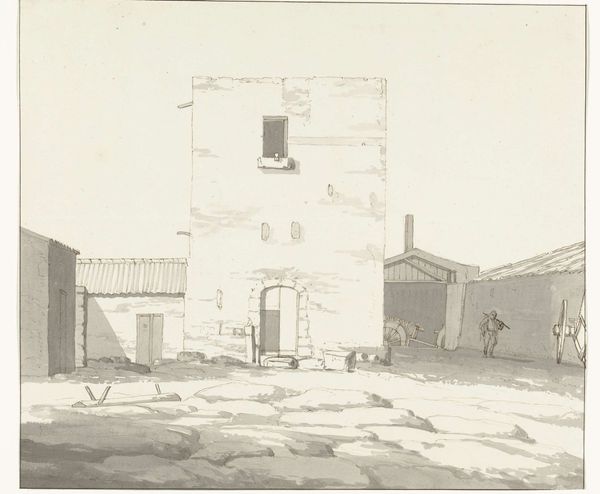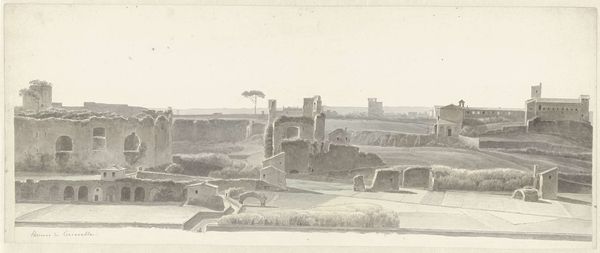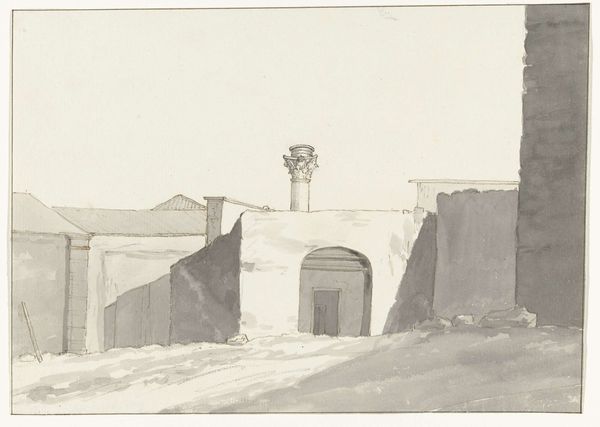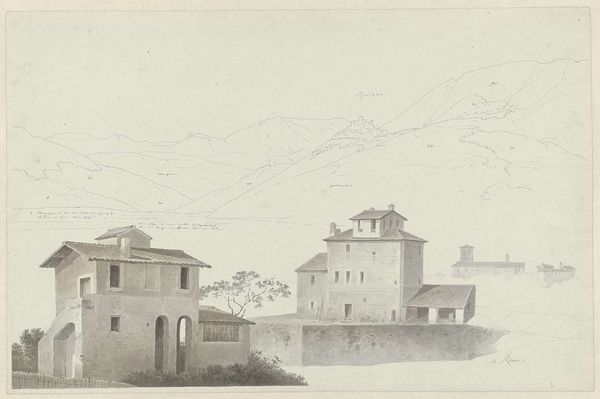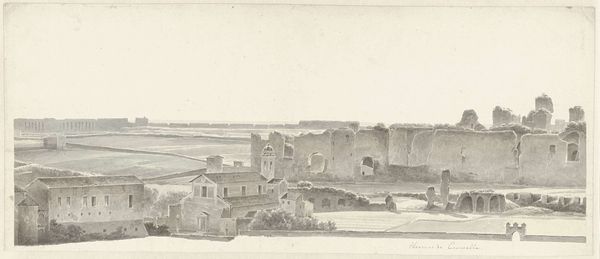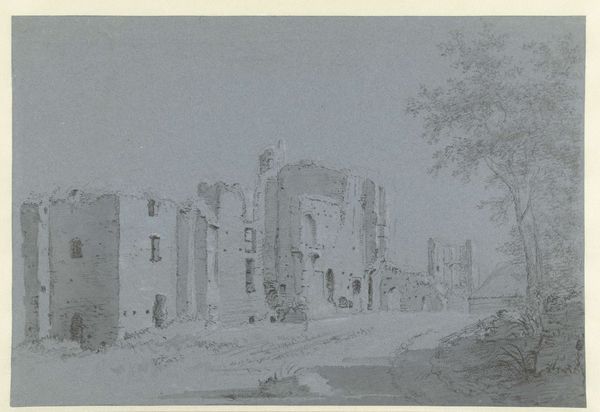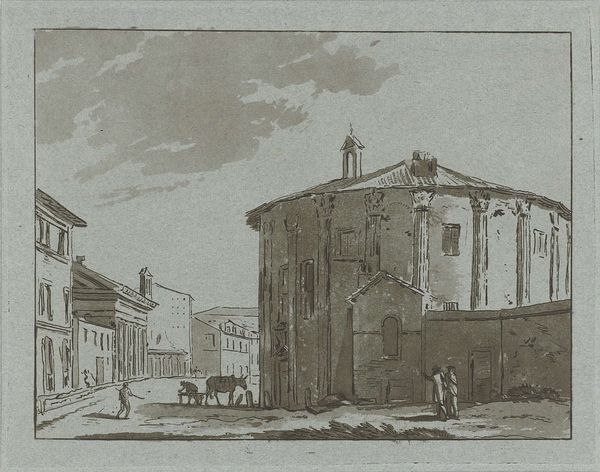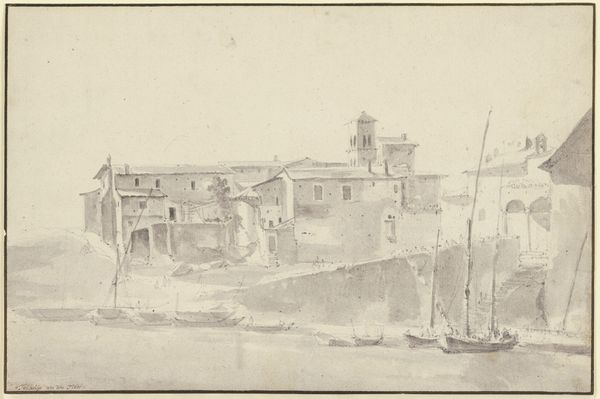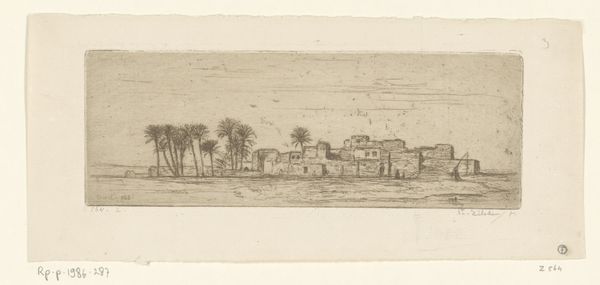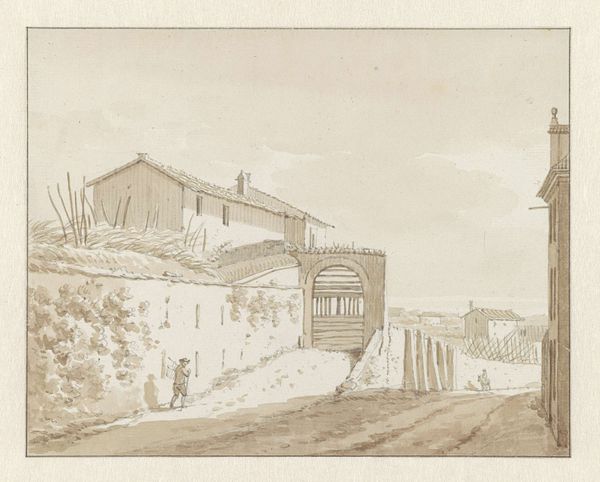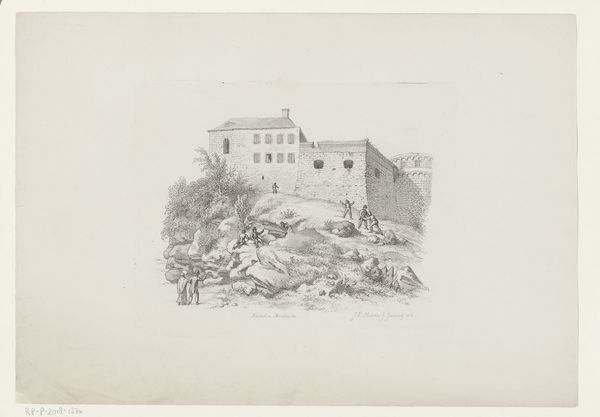
Gezicht op oud paleis van de Graaf van Egmond-Pignatelli in Cerignola 1778
0:00
0:00
drawing, paper, ink, architecture
#
architectural sketch
#
landscape illustration sketch
#
drawing
#
neoclacissism
#
landscape
#
etching
#
paper
#
ink
#
architectural drawing
#
architecture drawing
#
cityscape
#
architecture
Dimensions: height 125 mm, width 246 mm
Copyright: Rijks Museum: Open Domain
Curator: This is Louis Ducros' "Gezicht op oud paleis van de Graaf van Egmond-Pignatelli in Cerignola," created in 1778. Ducros captured the aging palace in ink on paper. Editor: My first impression is one of faded grandeur. The monochromatic palette gives it an air of melancholy. You can almost feel the sun-baked dustiness of the scene. Curator: Absolutely. Ducros, known for his landscapes, seemed drawn to the symbolism of ruins. The peeling façade whispers stories of the palace's noble past, contrasting with its current state. Those figures clustered by the building serve as a timeless testament of how we always find ourselves gathered around locations that hold historic weight. Editor: Indeed, and I am interested in how the ink interacts with the paper. The etching creates depth, but it's a very deliberate process—a sort of proto-photographic means of documentation that lends the piece a documentary quality. What kind of social and cultural impact might this approach have had? Was this meant for widespread consumption? Curator: Likely among a small elite interested in travel and art. Ducros, though Swiss, captured Italian architecture, so in some ways his imagery reflects a broader European interest in Neoclassicism. The very choice of ruins echoes a common interest of the era with both architectural legacy and classical ideas of civic pride and nobility. The crumbling surfaces give an edge to what can easily turn into propaganda! Editor: True! We can’t divorce this image from the political and social dynamics of the period. It brings up interesting questions about ownership, power, and the material realities of architectural preservation - or lack thereof. Curator: Precisely. A potent reminder that even grand symbols erode under the relentless pressure of time and changing social climates. The very making of it is an intentional act of observing history in decay. Editor: Well, it seems even an image as simple as an etching offers us insight into the multilayered relations between process, history, and our ever-evolving ways of looking. Curator: And ultimately, it underscores the endurance of symbols. Thank you for illuminating Ducros' world from that angle, it adds depth to the viewing!
Comments
No comments
Be the first to comment and join the conversation on the ultimate creative platform.
